Published a new report on Conn.'s sentencing enhancement zones, presented findings at legislative breakfast.
by Aleks Kajstura,
March 28, 2014
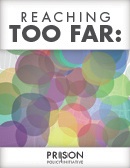 This morning I presented our new research on Connecticut’s sentencing enhancement zones at an informational Legislative Breakfast hosted by A Better Way Foundation, Unitarian Universalist Society: East Manchester, and Senator Gary Holder-Winfield.
This morning I presented our new research on Connecticut’s sentencing enhancement zones at an informational Legislative Breakfast hosted by A Better Way Foundation, Unitarian Universalist Society: East Manchester, and Senator Gary Holder-Winfield.
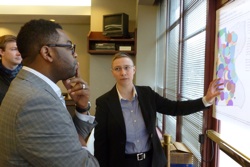
I discuss Hartford’s zones with Representative Brandon McGee
The report, released today, analyzes Connecticut’s 1,500-foot sentencing enhancement zones, mapping the zones in the state’s cities and towns and demonstrates that the law doesn’t work, it cannot possibly work as written, and that it creates an unfair two-tiered system of justice based on a haphazard distinction between urban and rural areas of the state.
Connecticut’s 1,500-foot sentencing enhancement zones, meant to protect children from drug activity, are some of the largest in the country. I described how the law’s sheer expanse means it fails to actually set apart protected areas and that it arbitrarily increases penalties for urban residents.
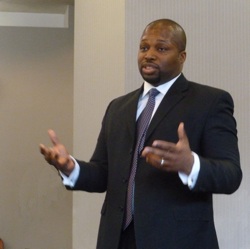
Senator Gary Holder-Winfield speaking at the breakfast
SB 259, currently pending before the Judiciary Committee, would decrease that size to a more effective 200 feet. This would allow the law to actually create the specially protected places it was intended to in the first place. Making the zone smaller would come much closer to the law’s original intent, and largely get rid of the urban penalty effect. For more details on the bill, check out my written testimony (with maps).
Sadie Gold-Shapiro reports back on a big milestone in PPI’s very own Research Clearinghouse.
by Sadie Gold-Shapiro,
March 25, 2014
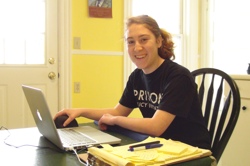
This February marked my one year anniversary of working at Prison Policy Initiative as a work study student from Smith College. While here, I have worked on a variety of projects including cross-checking annotations in 2010 Locator, finding citations for Please Deposit All of Your Money: Kickbacks, Rates and Hidden Fees in the Jail Phone Industry, and sorting through the petition to the FCC that called for federal regulation of exploitive prison telephone rates.
Since September of 2013, one of my main projects has been curating PPI’s very own Research Clearinghouse, home to one of the largest collections of empirical research about prisons on the internet with topics ranging from the Death Penalty to Families to Prison and the Economy. My job is to read through all of the latest reports from myriad organizations and sort them into the Clearinghouse so that they are accessible and easy to locate. This past week, the database reached a large milestone; on Wednesday, we broke 1800 reports!
The Research Clearinghouse is great because of the span and magnitude of the research that it holds. As a history major, I love exploring patterns and trends over time; with articles ranging in publication from 1982-today, the Clearinghouse offers a unique way to understand some of the changes the United States criminal justice system has undergone in the last thirty years. The Clearinghouse is also a great place to look if you are interested in researching a topic, but don’t know where to start. Best of all, the Clearinghouse is free and easy to use; all of the reports have been sorted into categories and there is a search function as well.
Interest piqued? If you want to learn more about the Research Clearinghouse and stay up-to-date on the latest research, you can explore it online or sign up for the Clearinghouse newsletter, delivered right to your email.
The Senate unanimously approved a bill to protect Massachusetts moms from being shackled during pregnancy, childbirth, and the postpartum period.
by Leah Sakala,
March 21, 2014
Yesterday Massachusetts took a huge step towards becoming the 19th state to reject the dangerous and inhumane practice of shackling mothers who are pregnant, in labor, or in the postpartum period while they are incarcerated.
The Massachusetts Senate unanimously passed Bill S.1171, which would ban the routine use of physical restraints on incarcerated pregnant women after the first trimester, including during labor and delivery. The bill also establishes common-sense basic standards for the maternity and childbirth care and information afforded to women who are incarcerated in Massachusetts.
The Prison Policy Initiative is a proud member of the Massachusetts Anti-Shackling Coalition (press release on the bill passage here), and we submitted testimony in support of S.1171 for the Joint Committee on Public Safety and Homeland Security’s public hearing in December.
Now the bill moves on to the House. Stay tuned!
Arielle Sharma reports back on her week working on prison gerrymandering research and sentencing enhancement zone messaging development.
by Arielle Sharma,
March 19, 2014
I spent the last week here at PPI for an Alternative Spring Break. I am from Connecticut, went to Boston University and am now at University of Connecticut Law School. I was excited to spend my week at PPI because of the excellent work they do to document the effects of mass incarceration with real numbers. I think my interest in prison began at a young age. I am of mixed race, half Indian and half Israeli. I had family who had been put in “prisons” during the Holocaust in Europe, and on my father’s side, I had family put in prison for marching with Gandhi. When I was young, the people I knew who had been in prison were not bad people. Too often, we dismiss incarcerated people because they are or have been deemed ‘criminals’ by society. Whether or not they have broken a law, they are still people who must be treated with respect.
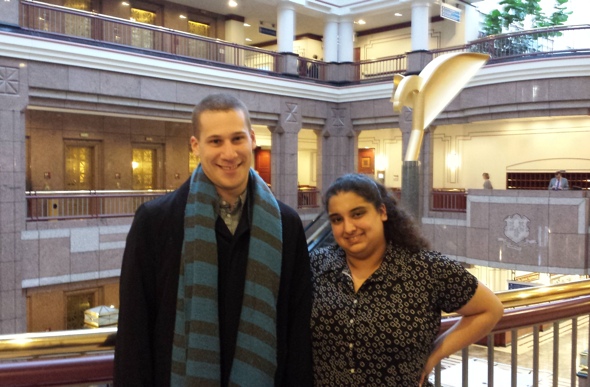 2014 Alternative Spring Break Law Interns Arielle Sharma (right) and Corey Frost (left) at the Connecticut State House.
2014 Alternative Spring Break Law Interns Arielle Sharma (right) and Corey Frost (left) at the Connecticut State House.
This week, I was able to work on a project explaining one way in which exploitation of incarcerated people undermines the democratic rights of those of us not in prisons- Prison gerrymandering. Prison gerrymandering lessens the voice we have in our government. When the area each elected official represents is distributed based on population, people in prisons are sometimes used to boost numbers in certain areas even though the prisoners have no vote in government. This means that people who live near a prison get more of a say because the representative they elect is not serving the prison population and so each vote cast by the actual residents of the district is counted more.
This week, I continued the research on how/if this gerrymandering is happening on one of the most local scales: school board elections. (Fun fact I wish my school board had taught me in high school: School boards have A LOT of power. In many places, they have a say in curriculum, extra-curriculars, budgets, and some hiring and firing decisions) Even though school boards may seem too small to matter, the effects of prison gerrymandering actually become greater as the total population gets smaller. In my research, I found a majority of school boards don’t have problems with prison gerrymandering because they have at-large elections, which means everyone gets to vote for every school board member in their area, regardless of where they live. They are all sharing their voting power with each other, so everyone’s vote weighs the same.
I learned Bureaucracy is no joke. We all know the outcome of policy decisions, but few know how we’ve gotten to the system we have. Luckily, 99% of the people talked in the schools and town halls were super nice. Unluckily, these fine folks generally haven’t spent a lot of time thinking about prison gerrymandering. I called school boards in New Jersey, Connecticut, Missouri, Michigan, Alabama and Colorado. After many questions, many gentle rephrasings and many call transfers, I found two schools districts that allocate voting power based on population:
- The people lines in RE-1 Valley School District in Sterling, CO were super on top of things, and were savvy enough to take out their prison population.
- Despite a lot of help from a lot of people in Hunterdon County, NJ, it is still unclear if prison populations are kept in when North Hunterdon-Voorhees Regional board member districts.
Either way, the Supreme Court has supported ending prison gerrymandering and more than 200 local governments have already ended it on their own so hopefully this will soon be moot on every level.
PPI works on a lot of issues, so I had the luck to help on some other problems, too. I went with Aleks who was testifying in Connecticut on a bill trying to at least lessen the enhanced penalty zones (currently a 1500ft radius) for selling or possessing drugs around a school, public housing, or day care. Of course, research shows that kids are far more likely to get drugs from each other than random adults.
But in addition to that, the zones are way too big to make a difference in deterring drug activity away from schools. In Connecticut, school zones are 1500 feet. Do you know how far that is? You could lay the empire state building on its side, and still have a few hundred feet to spare! That’s way too long (Watch this guy free climb 1500ft mountain and then tell me that’s not a crazy distance- the video doesn’t even get all the way to the top!).
When whole cities are turned into enhanced penalty zones, where is the incentive to specifically stay away from schools? Instead, zone policies end up giving extra penalties to people who are often doing things in their own homes (over 90% of some Connecticut cities’ residences are in these zones). Plus, the areas aren’t marked so there is no way to tell if you’re on the bad side of the line (assuming the other side hasn’t put you into another school zone).
Prison gerrymandering and enhanced penalty school zones are just two of the MANY things going on at PPI, make sure to check out the rest of the site for more!
-Arielle
Conn. Judicial Committee hears testimony in favor of sentencing enhancement zone reform.
by Aleks Kajstura,
March 13, 2014
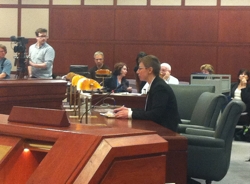
Yesterday, I testified before Connecticut’s Judiciary Committee in support of reforming Connecticut’s sentencing enhancement laws (my testimony starts at 3:34:03).
Connecticut’s 1,500-foot sentencing enhancement zones, meant to protect children from drug activity, are some of the largest in the country. I described how the law’s sheer expanse means it fails to actually set apart protected areas and that it arbitrarily increases penalties for urban residents. As Senator Holder-Winfield concisely explains, Senate Bill 259 would decrease that size to a more effective 200 feet.
For more details, check out the video above and my written testimony (with maps).
And check back in soon, I’m releasing a report examining Connecticut’s sentencing enhancement zones on the 28th.
Professor Owens teaches in the Political Science department of Emory University, and joined our board in January.
by Leah Sakala,
March 13, 2014
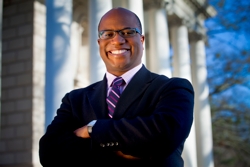
We are thrilled that Professor Michael Leo Owens has joined our Board of Directors this year. Professor Owens teaches in the Political Science department of Emory University, and specializes in urban, state and local politics, political penology, governance and public policy processes, religion and politics, and African American politics. We asked him a few questions about his work and involvement with PPI:
Why did you decide to join the PPI board?
Michael Leo Owens: As the piece of political science wisdom goes, “People participate when they can, when they want to, or when they’re asked.” My participation with PPI’s board covers all three bases! And I made a deliberate decision to leave another board of directors for PPI’s board. The switch is a better fit of interests, passions, and concerns.
What does your work focus on?
MLO: I’m a scholar of American politics and pubic policy. The politics of punishment and the civic effects of mass incarceration fill a big portion of my research, teaching, and service portfolio. In particular, I’m writing a book, Prisoners of Democracy, about the ways in which punitive public policies and ambivalent public opinion diminish the citizenship of people with felony convictions and undermine the positive reintegration of formerly incarcerated people. Additionally, I serve on the advisory boards of two other organizations that confront the challenges and consequences of “penal harm” – the Georgia Justice Project and Foreverfamily. The former provides defense counsel, social services, and advocacy for indigent persons. The latter, formerly known as Aid to Children of Imprisoned Mothers, is an Atlanta-based but national youth development organization, one that among other activities provides children with monthly visitations with their incarcerated parents.
What do you think is most unique about the Prison Policy Initiative and the projects it takes on?
MLO: What makes PPI unique is its moxie. It takes on BIG issues for a small organization and it’s successful in tackling them. Plus, by using data in a democratic way it increases the likelihood of community-based groups getting involved and taking the lead on their own behalf. Few data-driven organizations truly empower other groups. I’m glad PPI is one of them.
What’s something that you wish more people knew about the Prison Policy Initiative?
MLO: I wish more people knew that PPI is about more than prison gerrymandering. I also wish that more policymakers, especially in the South, knew of its existence and successes at making criminal justice more just and effective.
Our newest briefing includes the first graphic we’re aware of that aggregates the disparate systems of confinement in this country into one big-picture chart.
March 12, 2014
Ever wonder exactly how many people are locked up in the U.S. and why? Many people, interested citizens and policy wonks alike, find that seemingly simple question to be frustratingly difficult to answer. Until now.
Today, the Prison Policy Initiative releases its newest briefing, Mass Incarceration: The Whole Pie, that includes the first graphic we’re aware of that aggregates the disparate systems of confinement in this country into one big-picture chart:
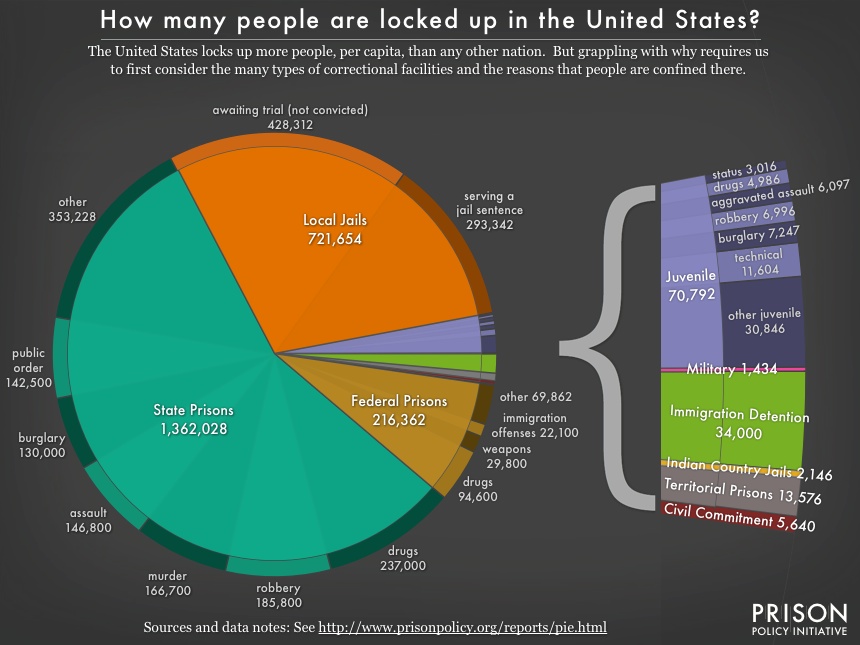
As we discuss in our briefing, this broader context pulls back the curtain and reveals answers to questions such as:
- How many people are behind bars for drug offenses?
- Which system holds more people: state prisons, federal prisons, or local jails?
- How many kids are locked up for offenses that most people don’t even think of as crimes?
- Where do we even have to look to find everyone who’s behind bars for immigration-related issues?
At the end of the day, locking up the more than 2.4 million people represented on this pie chart gives the United States the dubious distinction of being the number one incarcerator in the world. Policymakers and the public both have a pressing responsibility to take a good hard look at each slice of this pie and weigh any potential benefit of keeping those people behind bars against the significant social and fiscal cost.
The Prison Policy Initiative is thrilled to be chosen as one of three CharitySub organizations addressing this month’s “prison epidemic” theme.
by Peter Wagner,
March 3, 2014
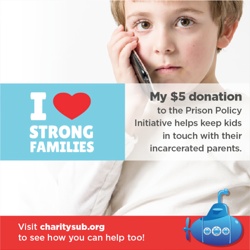 The Prison Policy Initiative is thrilled to be chosen as one of three CharitySub organizations addressing this month’s “prison epidemic” theme.
The Prison Policy Initiative is thrilled to be chosen as one of three CharitySub organizations addressing this month’s “prison epidemic” theme.
CharitySub is an innovative new approach to online giving. CharitySub members pledge $5 a month, and each month CharitySub picks a new cause and identifies three non-profits making a difference on that cause. Each month, CharitySub members get to pick which of the three organizations receives their $5.
You can join today to support this month’s organizations and learn about other organizations doing great work in the future.
 This morning I presented our new research on Connecticut’s sentencing enhancement zones at an informational Legislative Breakfast hosted by A Better Way Foundation, Unitarian Universalist Society: East Manchester, and Senator Gary Holder-Winfield.
This morning I presented our new research on Connecticut’s sentencing enhancement zones at an informational Legislative Breakfast hosted by A Better Way Foundation, Unitarian Universalist Society: East Manchester, and Senator Gary Holder-Winfield.



 2014 Alternative Spring Break Law Interns
2014 Alternative Spring Break Law Interns 






